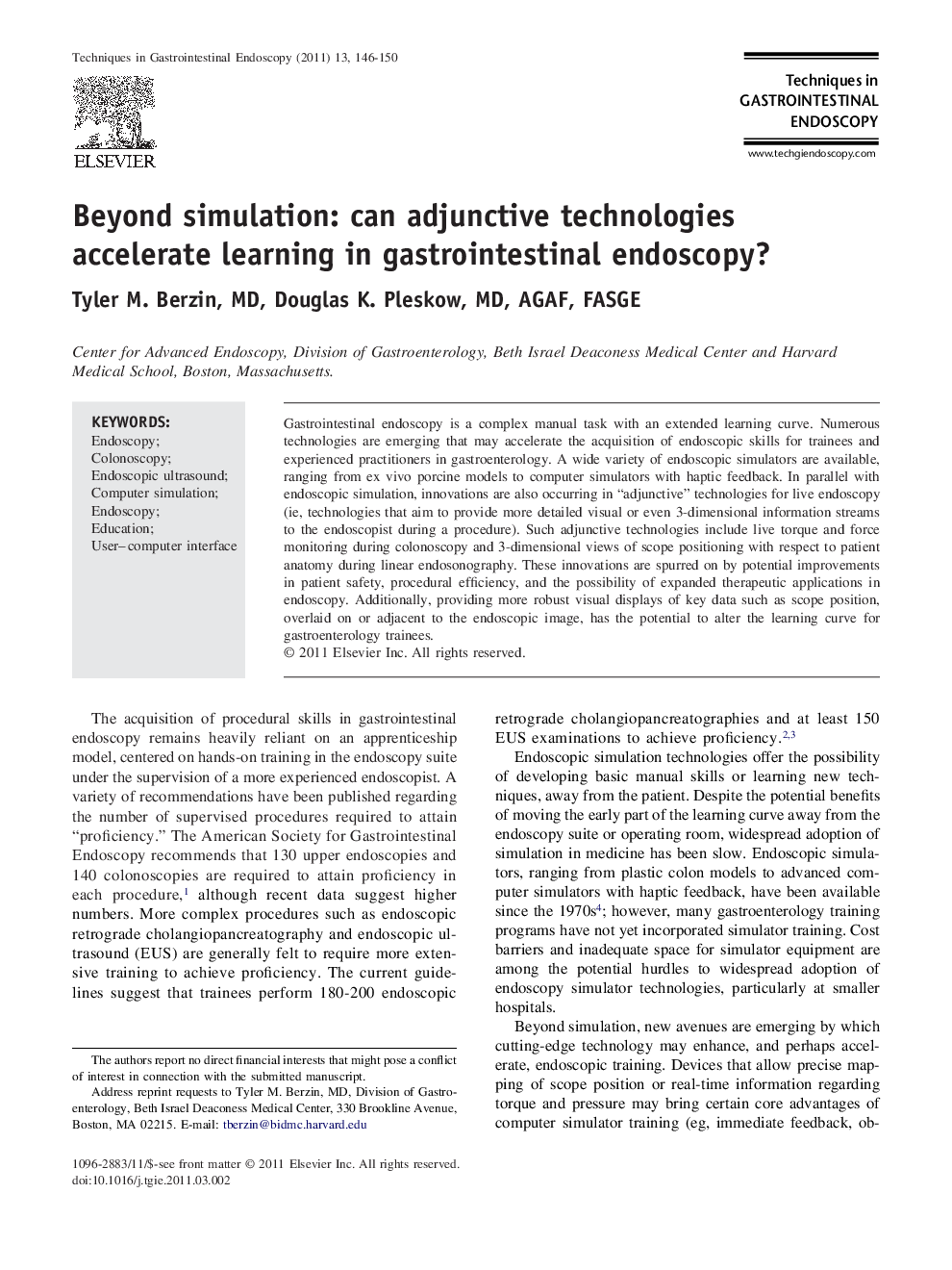| Article ID | Journal | Published Year | Pages | File Type |
|---|---|---|---|---|
| 3322537 | Techniques in Gastrointestinal Endoscopy | 2011 | 5 Pages |
Gastrointestinal endoscopy is a complex manual task with an extended learning curve. Numerous technologies are emerging that may accelerate the acquisition of endoscopic skills for trainees and experienced practitioners in gastroenterology. A wide variety of endoscopic simulators are available, ranging from ex vivo porcine models to computer simulators with haptic feedback. In parallel with endoscopic simulation, innovations are also occurring in “adjunctive” technologies for live endoscopy (ie, technologies that aim to provide more detailed visual or even 3-dimensional information streams to the endoscopist during a procedure). Such adjunctive technologies include live torque and force monitoring during colonoscopy and 3-dimensional views of scope positioning with respect to patient anatomy during linear endosonography. These innovations are spurred on by potential improvements in patient safety, procedural efficiency, and the possibility of expanded therapeutic applications in endoscopy. Additionally, providing more robust visual displays of key data such as scope position, overlaid on or adjacent to the endoscopic image, has the potential to alter the learning curve for gastroenterology trainees.
